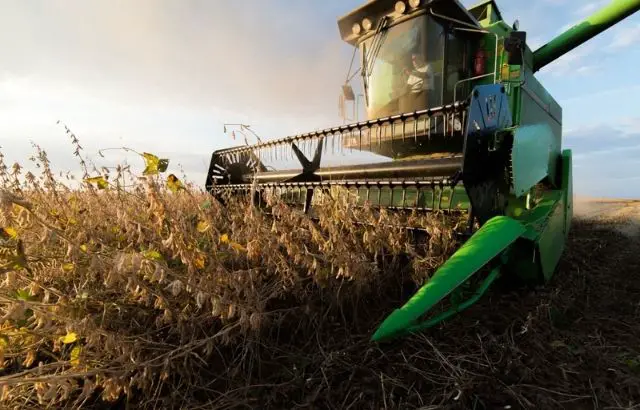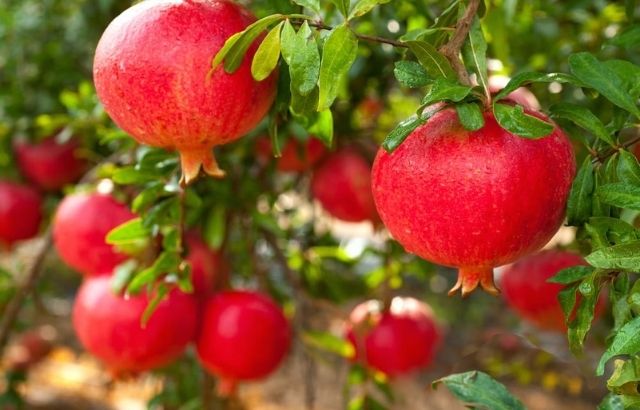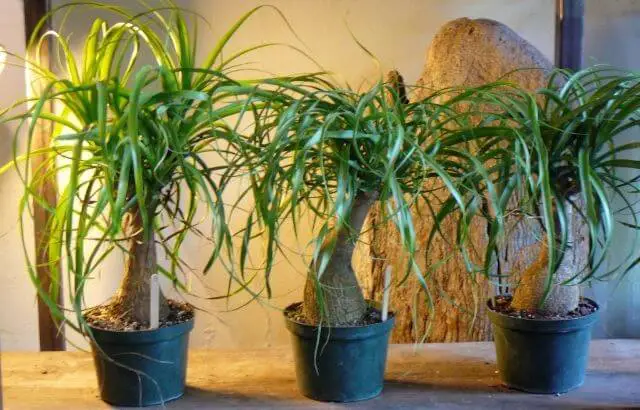Well! If someone is fond of gardening and plantation as a hobby, it is not easy to do until and without sufficient knowledge. Yes, your home’s vegetable garden is not limited to your common vegetables like tomatoes, carrots, green beans, and peppers. You can grow many other plants too, only with some attention and care. Although it is a good idea to grow vegetables you frequently need in your garden, you have many other options. Today’s article is about how to harvest soybeans, how it grows well, time, temperature, soil types, and many other essential factors you need to know. Let me walk you through a detailed account of the topic.
Essential Facts about Soybeans
- Soybeans are soft, warm weather type of grains
- It is better to harvest soybeans in spring, after the average last frost date, when the soil has warmed at the temperature of 60 degrees F.
- It would help if you did the soybean harvest, where the average day time temperature is 70 degrees F or 21 degrees C.
- Soybean can be grown in earlier days of warm winter regions.
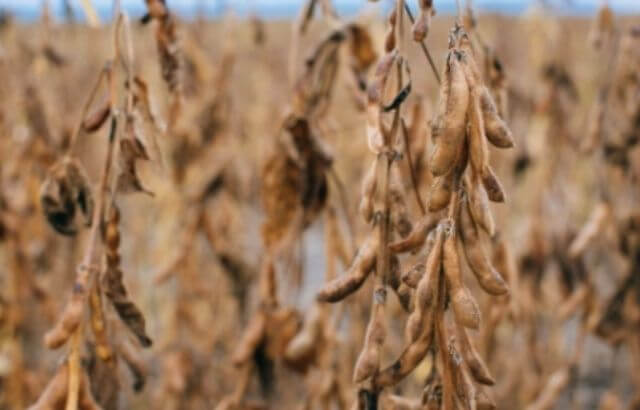
Description:
- It is a bushy, free of branches annual grain type.
- Soybean plants can grow up to 12 to 36 inches in height from the ground.
- Stems and leaves have hair on them, and flowers are white with lavender shade.
- The pods can grow up to 1 to 4 inches to form long clusters of three to five in number, but each fuzzy pod has 2 to 4 seeds in it.
- More than 10,000 soybean crops have colors black to gray, brown, green, yellow, white, and striped.
- The seeds’ size can be large, like a kidney bean, or as small, like a pea.
- The yields of soybean plants should be 4 to 8 in one yard.
Site:
- You can plant soybean in full sun, but can alas grow soybean indoors in partial shades, but the yield will be reduced.
- It can give the best result in loose and well-drained soil rich in organic matter. It prefers PH of 6.0 to 6.8 of soil.
- Also, it can hold poor soil also.
Plantation Time:
- You should sow soybeans in spring 2 to 3 weeks after the average last date when the soil has a temperature of 60 degrees F.
- It likes the daytime temperature of 60 degrees to 70 degrees F.
- They cannot hold cool temperatures.
Planting and spacing:
- The depth for soybean seeds should be 2 inches; in rows, it should be 2 to 4 inches apart.
- To sow thin seedlings, the distance should be 4 to 6 inches apart, cut them at ground level with scissors, and do not disturb the remaining plants’ roots. Learn using a sod cutter to level ground.
- It will help if you don’t go over water the plants after the immediate plantation.
- Do not soak seeds before plantation too.
- The seeds with too much moisture can crack, and germination also gets poor.
- In the first year of harvest, the seed can maintain a reasonable germination rate of 80 to 85 %, but it can drop to 65 % in the second year.
Companion plants:
- You can grow potatoes, cucumbers, corns, strawberries, celery, and summer savory with the soybeans, but you cannot grow garlic and onion.
Soybean Care Tips
- Keep soybean plant beds moist until it has pushed to the soil.
- Avoid overwatering the soybean crop because it can cause pods and flowers to fall off.
- During pod and flower formation, water it regularly.
- When beans get maturation and dried, they contain 45 to 55 % moisture before harvesting.
- When the soil becomes warm greater than 60 %, mulch it to maintain the soil moisture.
- The addition of aged compost to plants before plantation is a must.
- Do not add nitrogen-rich fertilizer to the plants of soybean.
- Like other grains, soybeans can exchange soil microorganisms known as nitrogen-fixing bacteria to produce nitrogen-fixing bacteria used by the plant.
- For sowing the combination of beans with higher moisture, you should be careful because there is moisture of 13 to 14 % moisture in it.
- Do not handle soybeans when wet or covered with heavy dew because it can spread fungus spores.
- Keep the plant beds weed-free; cultivation around the dry soybeans should be carefully done, so the plant shallow root system may not be disturbed.
- When the soil becomes warm, mulch the ground to maintain the moisture content in it.
- For the additional nitrogen to the soil, rotate soybeans and other legumes.
- The seeds, pods, and stem turn yellow when the field gets maturation.
- All pods become brown after four to nine days.
- The moisture in the seed is 33% at this level.
- If the weather is dry, then the beans are ready for harvesting after 4 to 5 days.
- Under the level of 13% moisture, the losses in this crop are very high.
- The seed dealers and grain elevators are helpful to measure the moisture content of the beans field if you do not have your meter.
- The soybean can be easily split into two if tapped with a hammer and dried, having a moisture of 13 % as a rough indication.
- If the moisture is below 13%, the shattering losses are at a very high level.
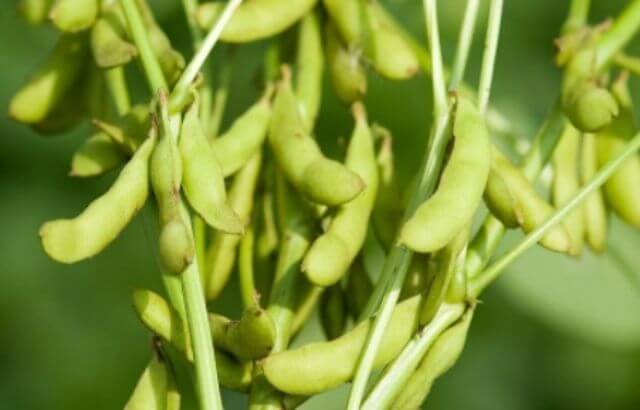
Chemicals for Soybeans
- If the seeds are not drying quickly, the chemical desiccant spray is helpful.
- Weeds can be killed at this level too.
- Early harvest of different varieties is good because it holds the higher market price, and the field losses are also low at this level.
- Until the seed had been reached the maturity level and enough yield reduction occurred, the desiccant could not kill plants.
- The powerful chemicals used for drying the truckle of soybeans are sodium chlorate and herbicide Paraquat.
- Many farmers are the use ofusing desiccants to improve the quality of soybeans.
Reduce losses:
It is essential to decrease the losses in a high-value crop by using a soybean harvest machine.
- If you plant resistant varieties and appropriate populations, shattering losses can be partially reduced.
- In the alternating and wet weather, shattering is good for staying longer in the field.
- It is essential to make a combination of adjustment and operation of the machine properly.
- Reasonably maintain the machine.
- The adjustment of reel speed should be 25% faster than the ground speed.
- Four or five bat reels can feed less than six–bate reels.
- Operation of cutter bar should be close to the ground as possible.
Handling:
• Because dried soybeans are prone to cracking, it is best to avoid slamming collected seeds against hard surfaces.
• Use cushioning containers and decrease conveyor speeds to absorb the shock of extended drops.
• Warm up the chilly beans by aerating them before transferring since they fracture easily when they are cold.
• Soybeans with a water content of 14% must be dry.
Storage of Soybeans
- Keep the stored grains cool and dry to prevent them from mold and insects.
- They lose and gain moisture faster, so the storage bins should well be aerated to ignore moisture.
Saving of seed:
To replant the seeds, save the required amount.
- They should be kept in well-ventilated containers, like cloth bags, cardboard boxes, glass jars covered with cheesecloth to maintain the moisture to about 13 % to keep them dry.
- Bean shells for edamame should be at least 2 – 3 inches long, brilliant green, and loaded with juicy kernels.
- While doing this, snap the soybean pods from the plant or use scissors and tear the plant’s edamame pods.
- According to the research, the farmers can get 8 to 10 bushels per acre by planting full seasoned beans by the end of April.
- The alfalfa soybean should be moisturized before chopping and wilted also.
How to Harvest Soybeans: FAQs
How do you know when soybeans are ready to pick?
The soybeans are ready to pick when some of the leaves are still dry on the plant; the beans may be dry on the plant when you think. They are fully mature when 95% of pods are at their mature tan color.
What machine is used to harvest soybeans?
A combine harvester is used for soybean harvesting. The machine can do the soybean stock cutting and threshing at the same time.
Can you eat soybeans out of the field?
No, you cannot eat soybeans out of the field because raw soybeans can cause abdominal pain, acute nausea, diarrhea, and vomiting. In large amounts, ingestion can lead to weight loss, failure to thrive, or death.
Conclusion
To conclude the topic, how to harvest soybeans, I recommend that you do it very easily with little care and attention. But nowadays, most of the farms have yield monitors; the data received by it can be very informative, timely, and useful in a way that when determining management operations on each field. However, to get the best results and make the right decisions, you require user data to work with. Thus, increasing the investment in agriculture needs correct data, sound setup, and calibration practices.

